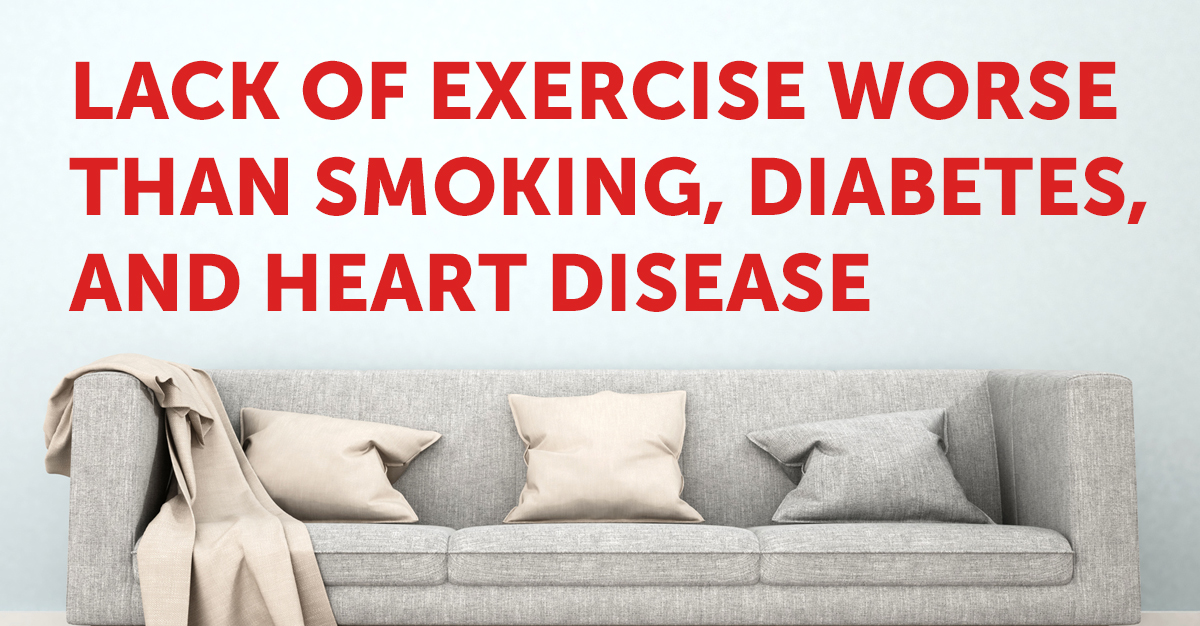
As physical therapists, it is our job to promote movement and overall well-being. Exercising regularly is linked to better physical and mental health and can help to prevent or delay heart disease, strokes, certain types of cancer, and diabetes. What is perhaps less known is that not being active can be harmful to your health. This lifestyle, called sedentary, has been linked to a number of preventable diseases. Researchers wanted to assess the impact of a sedentary lifestyle on all-cause mortality. The study, published in JAMA, suggests that a sedentary lifestyle has a larger impact on our health than previously thought.
About the study
The study by Jama included 122,007 participants at an academic medical center. The mean age of the participants was 53 years and they were 59% male. Among these, 13,637 died during the study.
The study followed participants for median of 8.4 years. Their physical fitness was measured using exercise treadmill testing and they were arranged by age and gender into the following performance groups:
- Low—less active than 25% of participants
- Below average—less active than 49% of participants
- Above average—more active than at least 50% of participants
- High—more active than at least 75% of participants
- Elite—more active than almost 98% of participants
The study found that death from any cause was lowest among elite category. Death rates were highest among those in low category. It also found that the increase in risk of death linked to sedentary behavior was equal to or greater than the risk of death from smoking, diabetes, and heart disease.
How Does This Affect You?
Cohort studies are observational studies. These studies simply observe events as they unfold, but do not interfere or introduce factors that can affect the outcome. While they can’t show direct cause and effect, they can show a possible link between two factors. A large number of studies have found that sedentary behavior affects health, however this is the first that showed it may be as significant as smoking, diabetes, or heart disease.
If you are sedentary, start moving. Make changes in small increments to help you adjust. Starting a workout routine can be a challenge, but with the help of a physical therapist, you can learn how to get started and safely build up to a regular routine. Work toward at least 150 minutes a week of moderate intensity aerobic activity. Here are some tips to help you get started:
- Start with short episodes of activity. Try doing 3-4 bouts of walking for 10 minutes at a time, spread throughout the day.
- Try out different activities to see which work best for you.
- Look for opportunities to move during the day. Take stairs instead of the elevator, park a little further away, or walk instead of taking your car. Little bits can add up and help you reach longer goals.
If you are already active, keep it up! Make sure to schedule activity into your daily routine.
Need help getting started? We have some great ideas for you here!
SOURCES:
2008 physical activity guidelines for Americans Summary. Office of Disease Prevention and Health Promotion website. Available at: https://health.gov/paguidelines/guidelines/summary.aspx. Accessed October 25, 2018.
Mandsager K, Harb S, et al. Association of cardiorespiratory fitness with long-term mortality among adults undergoing exercise treadmill testing. JAMA Netw Open. 2018;1(6):e183605. Available at: https://jamanetwork.com/journals/jamanetworkopen/fullarticle/2707428?resultClick=3. Accessed October 25, 2018.



